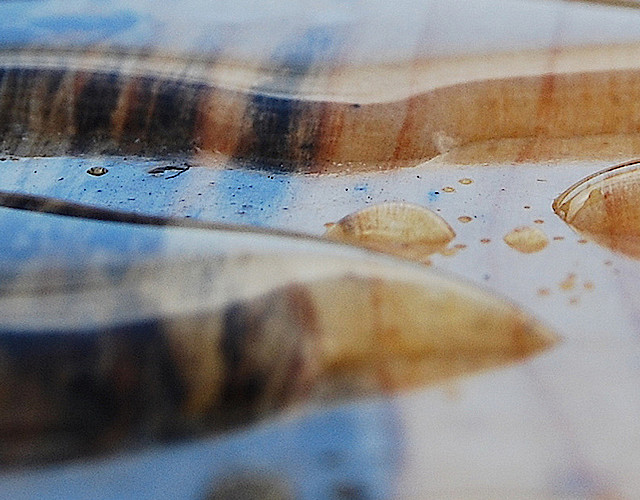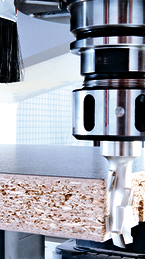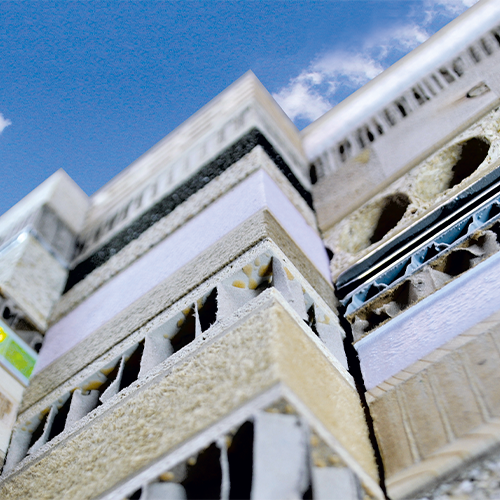

Wood is a renewable material that has more potential than just chipboard. It can be transformed into wood-based materials with innovative functionalities and hence new application possibilities through the use of state-of-the-art technology.
If it were up to Professor Martin Stosch, wood should be used in a much smarter way than for just being pressed to form chipboard or plywood. "Wood is a renewable resource and a truly sustainable building material. However, we are lacking resource-efficient technologies that allow us to make sustainable products from wood – products with a long serviceable life and long-term repair capabilities as well as eco-friendly disposal,” Stosch explains. He is an expert on industrial furniture manufacturing of the “Production and Wood Technology” faculty at the East Westphalia Polytechnic in Lemgo. Therefore, Stosch and many of his colleagues at European Universities do research in technologies that enable wood to broaden its functionality and to be used in applications outside the furniture industry and the wood construction industry. Even applications in machine and plant manufacturing or in the automotive industry are realistic, Stosch says. The example he gives are conveyor systems and machining centres made of beech plywood developed by colleagues at the Chemnitz Polytechnic, which not only guarantee high precision but also excellent oscillation damping characteristics.


These efforts are boosted on the one hand by an increase in environmental consciousness among the consumers and the public demand for a resource-efficient handling of renewable materials such as wood. On the other hand, furniture manufacturers do not differ noticeably in terms of product design, which has become increasingly unpretentious and primarily orients itself towards the product functionality. „Modern white high gloss kitchens are a symbol of the dematerialisation which is a growing trend throughout all industries,” Stosch explains. “This also has an effect on the design tasks. A work surface for a fixed telephone, a camera, a dictating machine, a calculator, etc., is no longer necessary, where the principal tool for everyday life is reduced to a cell phone. And, in times of e-book readers, who actually wants to have a bookshelf in the living room? In fact, the manufacturers can no longer distinguish themselves by creating a particular design. Moreover, although chipboard is extremely cost-effective, it is neither considered as a high-performance material nor renowned for its sustainability, let alone being a smart material. According to Stosch, enterprises looking for a way out and a chance to distinguish themselves from others can impart new functionalities to the products – based on “smart wood”, which offers extended possibilities.
Among all the types of wood used in an innovative manner, beach wood holds a special position. It is the wood type that is most frequently found in Germany, specifically in East Westphalia, the centre of German furniture manufacturing. “However, beech wood is mainly used for making charcoal”, Stosch says. The reason for this, as Stosch explains it, is that untreated beech wood is subject to very fast weathering. After only forty weeks, i.e. less than one year, the modulus of elasticity is zero. This means that the wood will crumble. But since beech wood has excellent bearing capacity and can keep up with the tensile strength of glass fibre without any problem, numerous research projects worldwide are trying to find out how the properties of wood can be changed in a sustainable way.
Consequently, the faculty of wood biology and wood products at the Georg August University in Göttingen developed a method to improve the weather-resistance of beech wood durably. To do so the researchers employed a product used in the textile industry to make cotton fibres crease-resistant. This substance was pumped into beech wood veneer sheets using the vacuum pressure treatment process. The result: the beech veneer sheets that have undergone this type of treatment can be exposed to weather for a longer time than teak wood and are even suitable for pool surrounds. However, these weather-proof veneer sheets require high-quality glue systems, which is the only reason why the process has not yet been placed on the market.

Researchers of the EMPA, the Swiss material testing and research institute in Zurich, developed another technology that allowed them to significantly improve the mechanical properties of wood and moreover to give it new properties: With the help of acid, they removed the lignin – the natural adhesive-like substance that makes wood strong at the cellular level – and then compressed the wood to restore its strength. The stiffness and tensile strength of the material made in this way is three times higher than that of natural fir wood. At the same time, the material is much more porous than natural wood, which enables other substances to be incorporated into the wood structure imparting new properties to the material. An example of this is the magnetization of wood through the addition of iron oxide.
Other processes, some of which are patented, are wood metallization and iodisation. For example, EMPA managed to make the wood structure bind iodine so that it cannot be washed out of the material. Wood surfaces treated with iodine provide durable protection against bacteria and increase hygiene in bathrooms or kitchens. During the metallization process, the metal becomes an integral part of the wood surface through the formation of a chemical bond. The invisible metal layer makes the wood absolutely waterproof.
Stosch and his team do research specifically in lightweight construction, multiple-layer materials and joining technology. “We see this trend towards lightweight construction since 2003/2004. The driving force behind this – then as well as today – was in particular the mobile interior design field with high-performance sandwich materials,” Stosch explains. Developments include lightweight boards with hollow structures that require 40% less chips than conventional chipboard and a 3D printing process that prints a construction point directly into an only 4 mm thick chipboard panel. Hence both positive and frictional locking is achieved, increasing the holding force of the board from almost zero to approx. 850 N.
According to Stosch, lightweight boards with hollow spaces offer many advantages. The hollow space allows for cables to be threaded through, to integrate charging stations for cell phones or to convert individual areas of the desktop into hot plates for coffee cups or coolers for laptops “These product designs are both feasible and marketable immediately,” Stosch is sure. In addition to that, lightweight elements reduce raw material consumption and hence they conserve renewable resources like wood.
